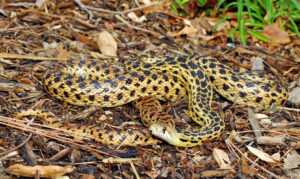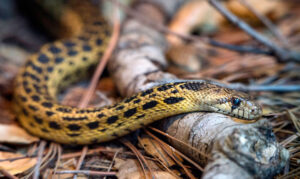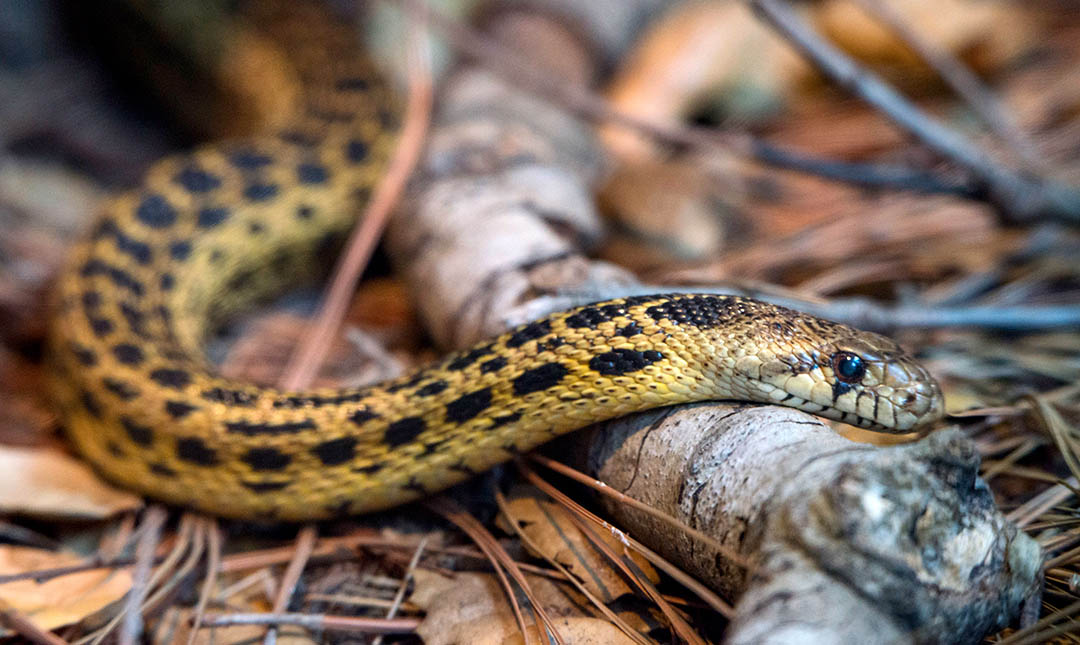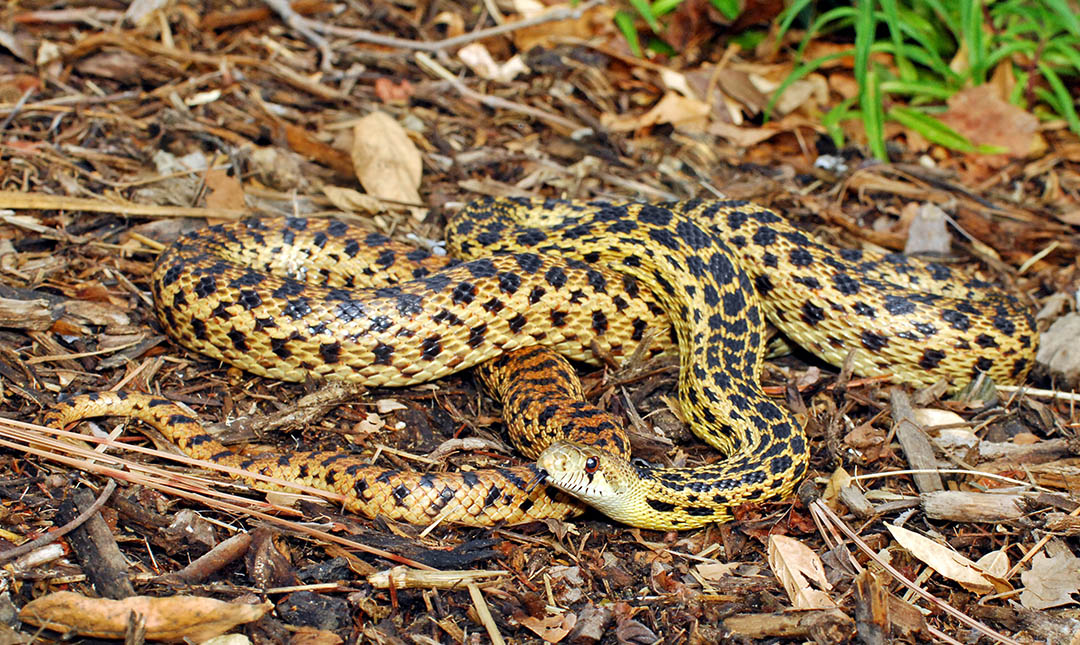About
This nonvenomous snake’s diet includes moles, rats, mice, and, of course, gophers. As constrictors, they wrap their bodies around their quarry and contract their powerful muscles, squeezing the prey until it suffocates. The Zoo houses San Diego gopher snakes, the local subspecies found in Griffith Park and throughout most of Southern California. Like all snakes, they play an important role in the ecosystem by keeping the rodent population in check. They are often mistaken for rattlesnakes, which is a deliberate ploy on the part of this snake to confuse predators. When threatened, a gopher snake will rise up, flatten its head into a triangular shape that resembles that of a venomous snake, hiss loudly, and shake its tail in leaf litter or other debris, producing a sound similar to a rattle. Predators, which include foxes, red-tailed hawks, and coyotes, are often fooled and quickly retreat. Gopher snakes spend up to 90 percent of their time in underground burrows. These solitary snakes are active during the day, investigating burrows and rocky crevices in search of food within a small home range. They are adept at climbing trees and can also swim.
During the spring mating season, male gopher snakes “wrestle” on the ground, entwined from neck to tail, hissing frequently. These bouts, which may last up to an hour, have been mistaken for courtship displays between male and female. The wrestling matches determine who wins mating rights. Females lay between two 2 and 24 eggs which adhere together with a glue-like substance. Fully-developed young hatch after 65 to 75 days. Hatchlings are between 12 and 18 inches long and fully independent at birth.


Habitat
Gopher snakes are one of the most widespread snake species in North America. Their range extends from the Atlantic coast to the Pacific, and from southern Canada to Baja California, Mexico. They are found in deserts, prairies, brush lands, woodlands, coniferous forests, and farmlands.
Diet
Gopher snakes hunt rodents, rabbits, lizards, birds, and, occasionally, other snakes, usually locating prey with their sense of smell. They will also consume eggs.
Physical Characteristics
Gopher snakes can reach a length of four to eight feet. Life span averages 15 years in the wild but can be more than 30 years in human care. Gopher snakes from different habitats vary in coloration, which often mimics local plants to provide the best camouflage.
LOCATION WITHIN THE ZOO
You’ll find this species in the Desert LAIR. See Zoo Map.


